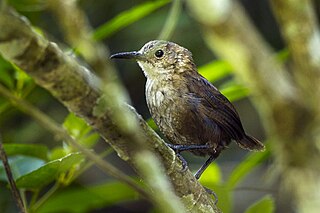 W
WHylorchilus is a genus of bird in the family Troglodytidae. It contains the following species:Nava's wren Sumichrast's wren
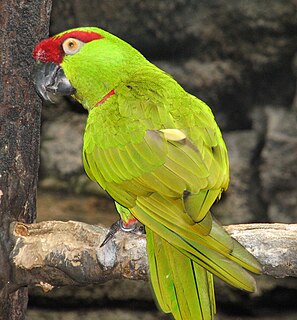 W
WThe thick-billed parrots are stocky brilliant green Neotropical parrots with heavy black beaks of genus Rhynchopsitta of thick billed macaw-like parrots. The genus comprises two extant species, the thick-billed parrot and the maroon-fronted parrot, as well as an extinct species from the Late Pleistocene in Mexico. The two extant taxa were formerly considered conspecific; they have become rare and are restricted to a few small areas in northern Mexico. The range of the thick-billed parrot formerly extended into the southwestern United States; attempts at reintroduction have been unsuccessful so far.
 W
WThe green-striped brushfinch is a species of bird in the family Passerellidae. Until recently, it was placed in the genus Buarremon.
 W
WThe orange-breasted bunting is a species of passerine bird in the family Cardinalidae. It is endemic to Mexico, where its natural habitats are subtropical or tropical dry forests and subtropical or tropical dry shrubland. With its wide range and large total population, the International Union for Conservation of Nature considers it as being of "least concern".
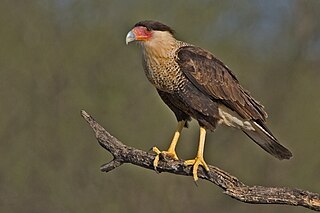 W
WThe northern crested caracara, also called the northern caracara and crested caracara, is a bird of prey in the family Falconidae. It was formerly considered conspecific with the southern caracara and the extinct Guadalupe caracara as the "crested caracara". It has also been known as Audubon's caracara. As with its relatives, the northern caracara was formerly placed in the genus Polyborus. Unlike the Falco falcons in the same family, the caracaras are not fast-flying aerial hunters, but are rather sluggish and often scavengers.
 W
WThe West Mexican chachalaca is a species of bird in the family Cracidae. It is found only in Mexico, more specifically in Pacific-slope thorn forest from Jalisco to Oaxaca. Its natural habitats are subtropical or tropical dry forest and subtropical or tropical moist lowland forest.
 W
WThe short-crested coquette is a species of hummingbird in the family Trochilidae.
 W
WThe rufous-capped brushfinch is a species of bird in the family Passerellidae. It is endemic to Mexico.
 W
WThe Mexican hermit is a species of hummingbird in the family Trochilidae
 W
WThe bumblebee hummingbird is a species of hummingbird in the family Trochilidae. It is predominantly found in Mexico, but has occurred as a vagrant in the United States (Arizona). At 7 to 7.5 cm, it is the smallest bird known to have occurred in North America north of Mexico. At a weight of 2.2 g (0.078 oz), it is one of the smallest birds known to exist in the world. Its natural habitat is subtropical or tropical moist montane forest.
 W
WDoubleday's hummingbird is a species of hummingbird in the family Trochilidae also known as the turquoise-crowned hummingbird. Some taxonomic authorities, such as the American Ornithological Society consider this bird to be a subspecies of the broad-billed hummingbird, while others consider it distinct.
 W
WThe dusky hummingbird is a species of hummingbird of the family Trochilidae.
 W
WThe Oaxaca hummingbird or blue-capped hummingbird is a species of hummingbird endemic to subtropical moist forest in the southernmost portion of the Sierra Madre del Sur in the Mexican state of Oaxaca. Its tiny range is threatened by habitat loss.
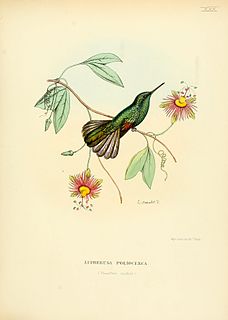 W
WThe white-tailed hummingbird is a species of hummingbird endemic to subtropical moist forest in the westernmost portion of the Sierra Madre del Sur in Guerrero and extreme western Oaxaca, Mexico. Its tiny range is threatened by habitat loss.
 W
WThe dwarf jay is a species of bird in the family Corvidae. It is endemic to Mexico. Its natural habitat is subtropical or tropical moist montane forests, specifically comprising an oak-pine mix. As its name would imply, this is the smallest member of the family Corvidae at 20–23 cm long and weighing 41 g. It is threatened by habitat loss.
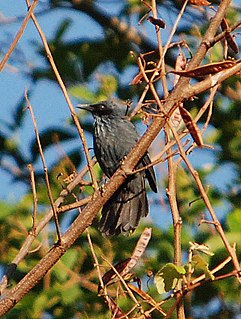 W
WThe blue mockingbird is a species of bird in the family Mimidae. It is endemic to Mexico, but has occurred as a vagrant in the southern United States. Its natural habitats are subtropical or tropical dry forests, subtropical or tropical moist montane forests, and heavily degraded former forest.
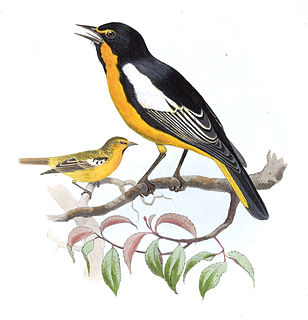 W
WThe black-backed oriole is a species of bird in the family Icteridae. It is endemic to Mexico. Its natural habitats are subtropical or tropical moist lowland forest and subtropical or tropical moist montane forest, but it is also found in cities.
 W
WThe Mexican parrotlet, also known as the turquoise-rumped parrotlet or the Mexican blue-rumped parrotlet, is a species of parrot in the family Psittacidae.
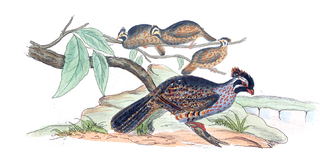 W
WThe long-tailed wood partridge is a bird species in the family Odontophoridae. It is found only in Mexico. Its natural habitat is subtropical or tropical moist montane forest.
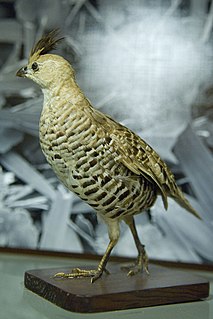 W
WThe banded quail is a species of bird in the family Odontophoridae. It is found only in Mexico where its natural habitats are subtropical or tropical dry forests, subtropical or tropical dry shrubland, subtropical or tropical high-altitude shrubland, and heavily degraded former forest.
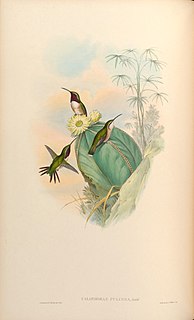 W
WThe beautiful sheartail or beautiful hummingbird is a species of hummingbird in the family Trochilidae. It is found in southern-central Mexico. Its natural habitat is subtropical or tropical high-altitude shrubland. Small hummingbird within arid bushes and shrubs in dry inland areas of southwestern Mexico. It feeds at all levels, very often on cactus flowers.
 W
WThe Mexican sheartail is a species of hummingbird in the family Trochilidae. It is endemic to Mexico.
 W
WThe slender-billed grackle was a species of bird in the family Icteridae. The species was closely related to the western clade of the great-tailed grackle, from which it diverged quite recently, approximately 2,000 years ago.
 W
WThe black-chested sparrow is a species of bird in the family Passerellidae that is endemic to Mexico.
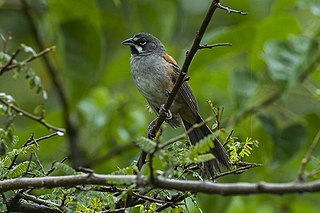 W
WThe bridled sparrow is a species of bird in the family Passerellidae. It is endemic to Mexico. Its natural habitat is subtropical or tropical high-altitude shrubland. The species are brown coloured.
 W
WThe cinnamon-tailed sparrow is a species of bird in the family Passerellidae that is endemic to Mexico.
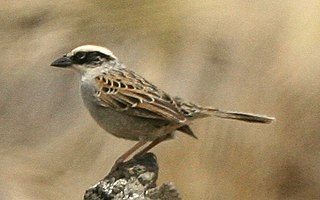 W
WThe striped sparrow is a species of bird in the family Passerellidae. It is monotypic within the genus Oriturus.
 W
WThe red-headed tanager, is a medium-sized American songbird. Formerly placed in the tanager family (Thraupidae), it and other members of its genus are now classified in the cardinal family (Cardinalidae). The species's plumage and vocalizations are similar to other members of the cardinal family. Along with the white-winged tanager and red-hooded tanager, it is sometimes placed in the genus Spermagra.
 W
WThe gray thrasher is a medium-sized passerine bird belonging to the family Mimidae like the other thrashers. It is endemic to the Baja California peninsula in Mexico where it occurs from the tip of the peninsula north to 31°N on the west coast and 29°N on the east coast. It inhabits desert scrubland.
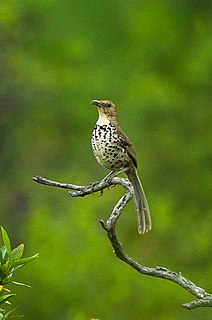 W
WThe ocellated thrasher is a species of bird in the family Mimidae. It is endemic to the highlands of south-central Mexico, where ts natural habitats are dry scrubland and open oak and pine woodland between 1500 and 3000 m above sea-level.
 W
WThe Aztec thrush is a species of bird in the family Turdidae. It is found mainly in Mexico, but vagrants are occasionally seen in the United States. Its natural habitat is montane forests. The IUCN Red List denotes it as a least-concern species.
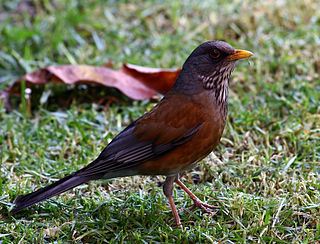 W
WThe rufous-backed thrush is a songbird of the thrush family. It is endemic to the Pacific slope of Mexico. It is also known as the rufous-backed robin.
 W
WThe collared towhee is a species of bird in the family Passerellidae that is endemic to Mexico. Its natural habitats are subtropical or tropical moist pine-oak montane forest and heavily degraded former forest. It occupies mountainous terrain from about 1,500 to 3,500 m.
 W
WThe white-throated towhee is a species of bird in the family Emberizidae that is endemic to Mexico. Its natural habitats are subtropical or tropical moist montane forests and subtropical or tropical high-altitude shrubland.
 W
WThe dwarf vireo is a species of bird in the family Vireonidae. It is endemic to Mexico.
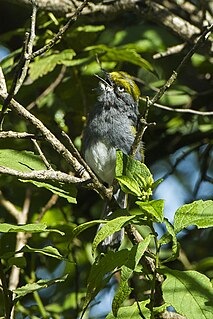 W
WThe slaty vireo is a species of bird endemic to shrubby highlands of southern Mexico.
 W
WThe red warbler is a small passerine bird of the New World warbler family Parulidae endemic to the highlands of Mexico, north of the Isthmus of Tehuantepec. It is closely related to, and forms a superspecies with, the pink-headed warbler of southern Mexico and Guatemala. There are three subspecies, found in disjunct populations, which differ primarily in the color of their ear patch and in the brightness and tone of their body plumage. The adult is bright red, with a white or gray ear patch, depending on the subspecies; young birds are pinkish-brown, with a whitish ear patch and two pale wingbars.
 W
WThe white-striped woodcreeper is a species of bird in the Dendrocolaptinae subfamily. It is endemic to Mexico.
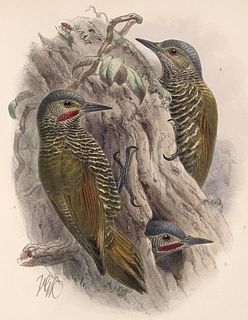 W
WThe grey-crowned woodpecker is a bird species in the woodpecker family (Picidae). It was formerly placed in the genus Piculus. The scientific name auricularis means "eared", an appearance created by the confluent, fine patterning of the species' head.
 W
WBoucard's wren is a species of bird in the family Troglodytidae. It is endemic to Mexico. Its natural habitats are subtropical or tropical moist montane forests and subtropical or tropical high-altitude shrubland.
 W
WThe gray-barred wren is a species of bird in the family Troglodytidae. It is endemic to Mexico.
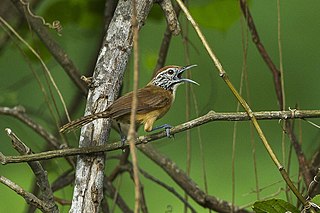 W
WThe happy wren is a species of bird in the family Troglodytidae. It is endemic to the Pacific slope of western Mexico, from the state of Sonora to the state of Oaxaca, and also on islands west of the Mexican coast. As with other species of Pheugopedius, older sources classify it within genus Thryothorus. Some authorities have treated it as a subspecies of P. rutilus or P. sclateri. There is significant geographical variation, and six subspecies are recognized: P. f. sonorae is found in southern Sonora and northern Sinaloa; P. f. pallidus is found in central Sinaloa, western Durango and southwards to Jalisco and Michoacán; P. f. lawrencii and P. f. magdalenae are found on different islands of the Islas Marías; P. f. grandis is found in the Balsas River basin, and the nominate subspecies, P. f. felix in southwestern Mexico from Jalisco to Oaxaca
 W
WThe Sinaloa wren is a species of bird in the family Troglodytidae. It is endemic to Mexico, with rare but regular sightings in the United States, in Arizona.
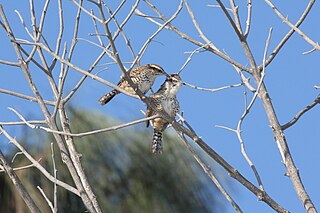 W
WThe spotted wren is a species of bird in the family Troglodytidae. It is endemic to Mexico. Its natural habitats are subtropical or tropical dry forests, subtropical or tropical moist montane forests, and subtropical or tropical high-altitude shrubland.
 W
WThe Altamira yellowthroat is a New World warbler. It is a resident breeding bird endemic to the Gulf slope of northeastern Mexico.
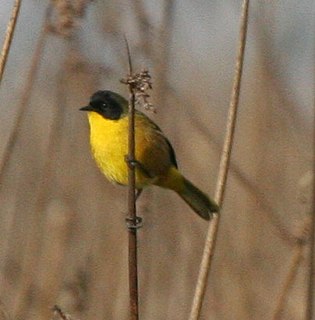 W
WThe black-polled yellowthroat is a species of bird in the family Parulidae.